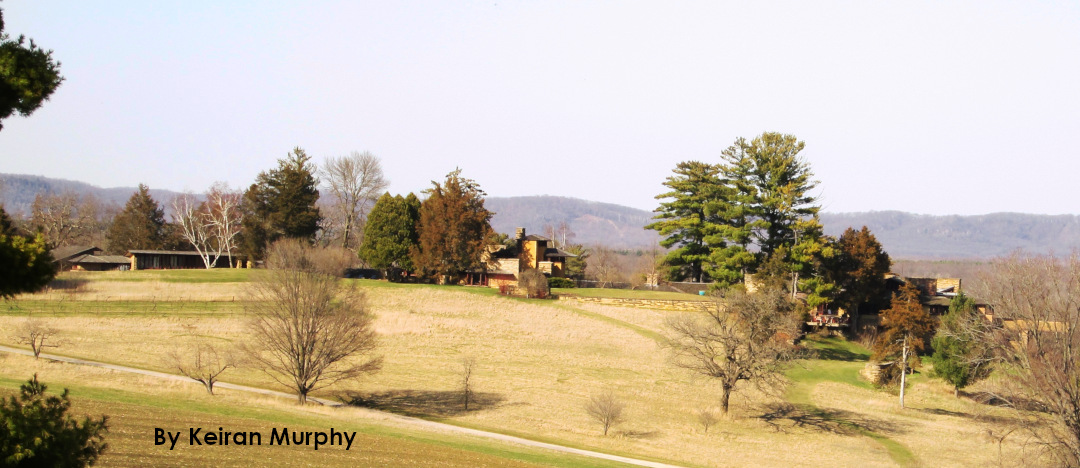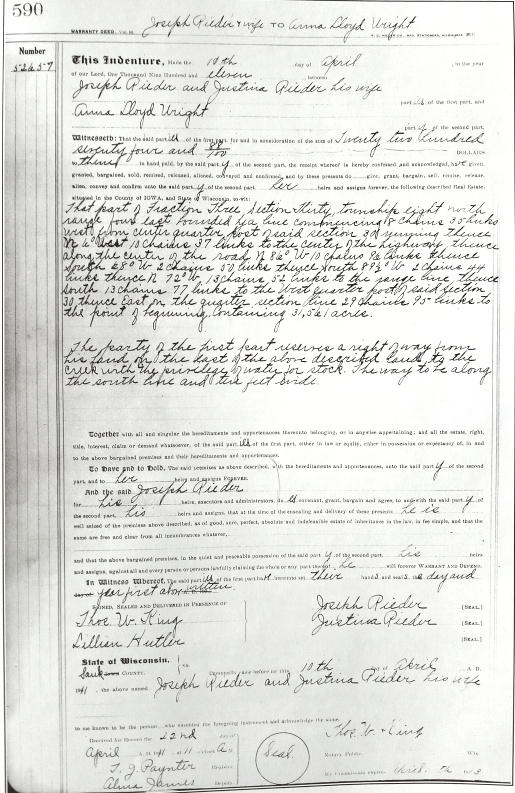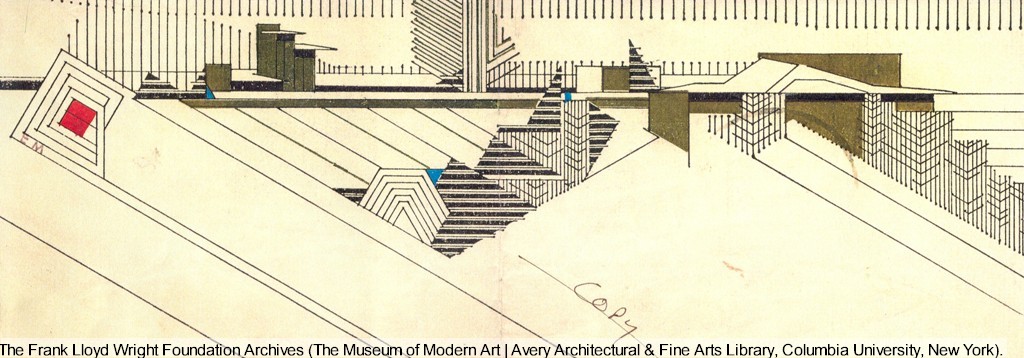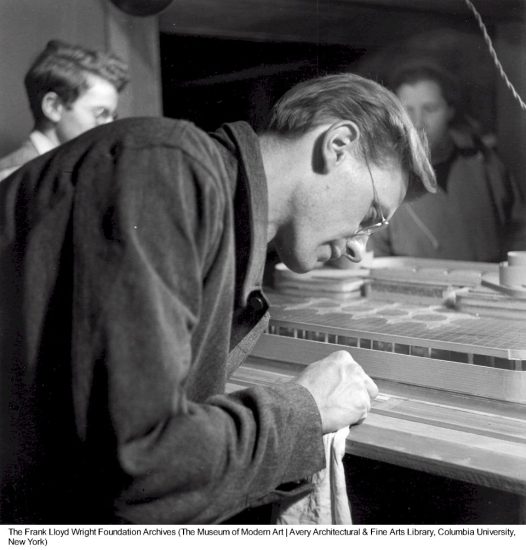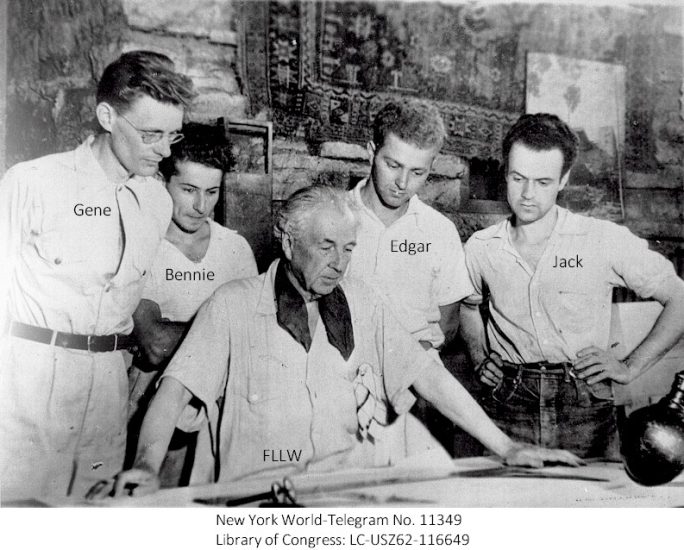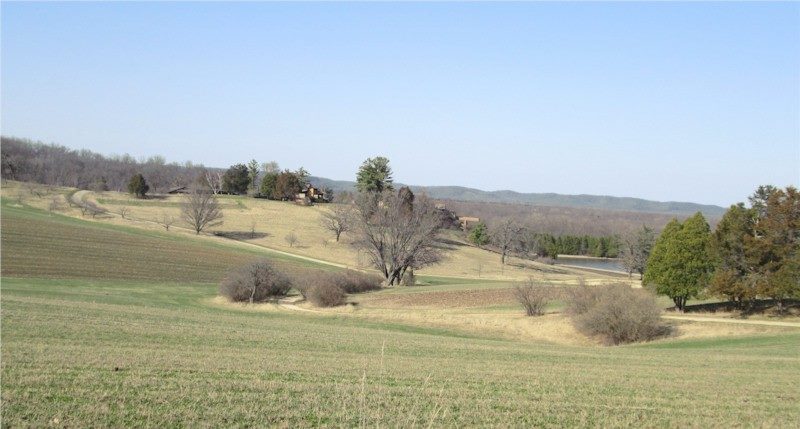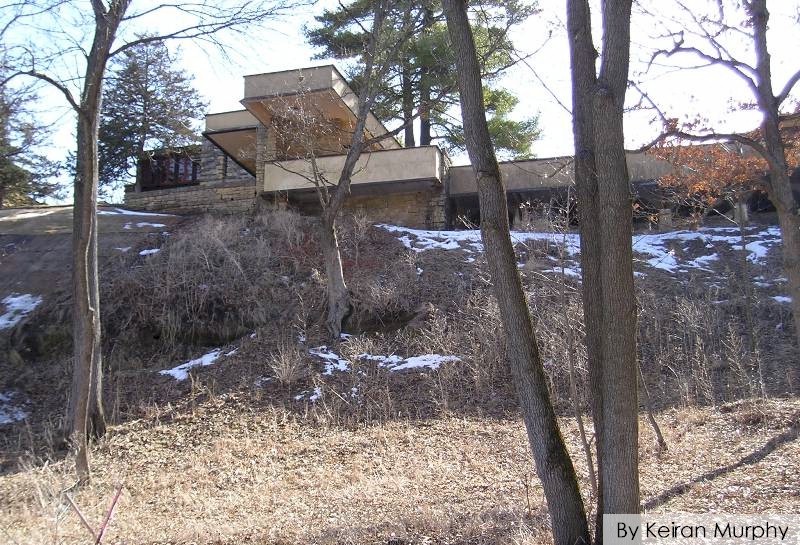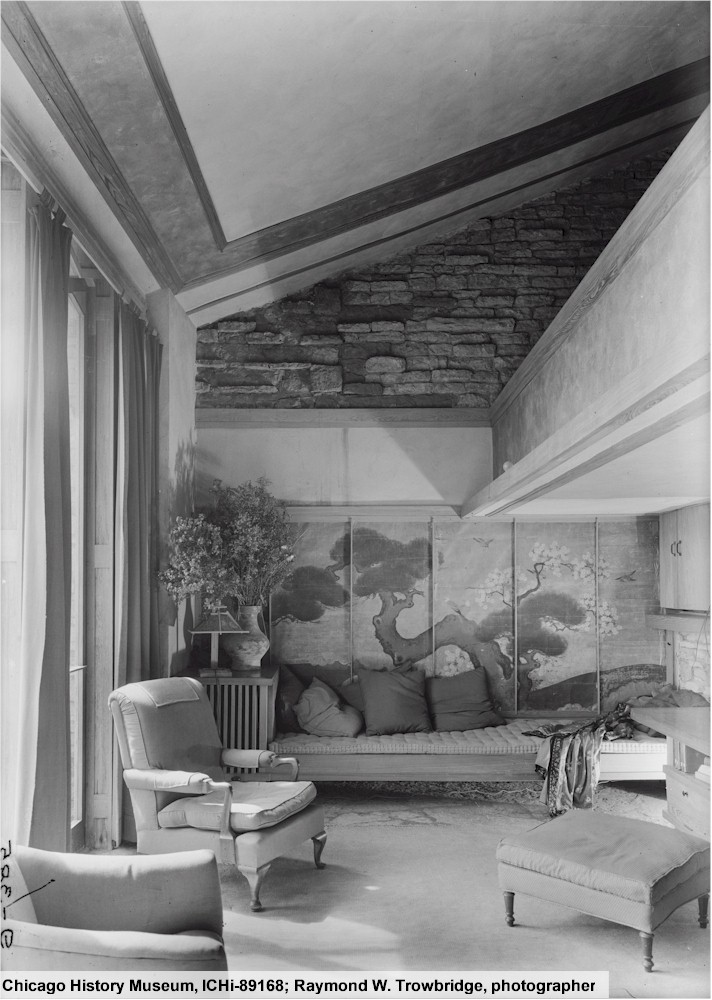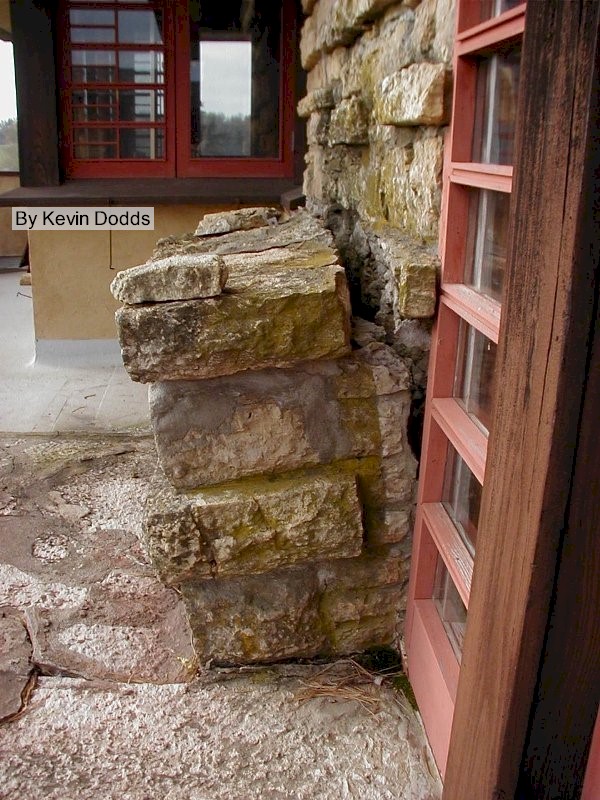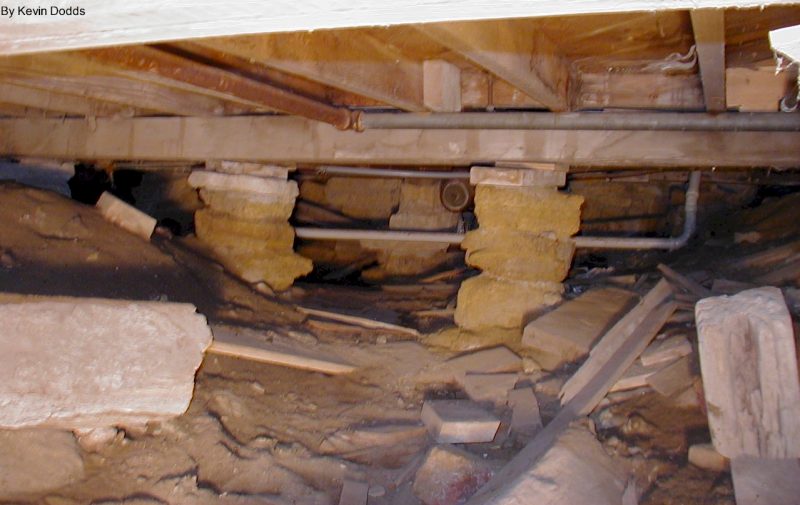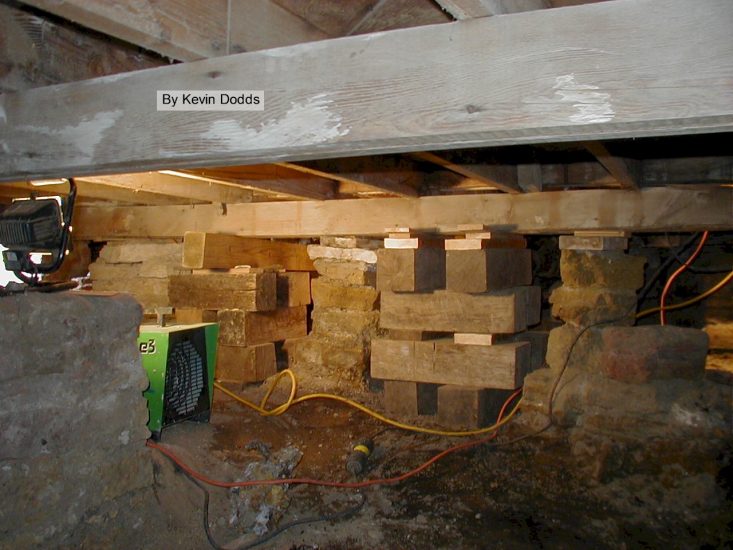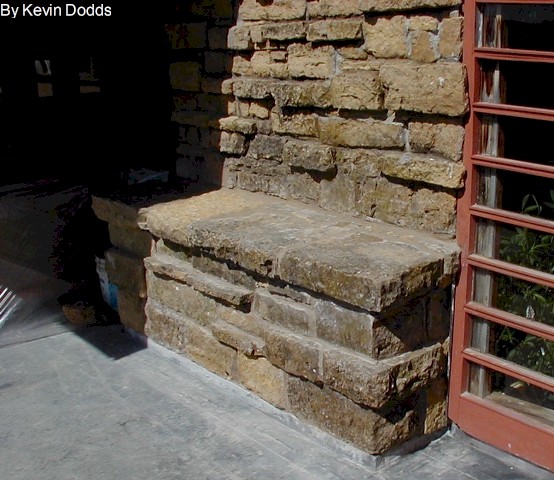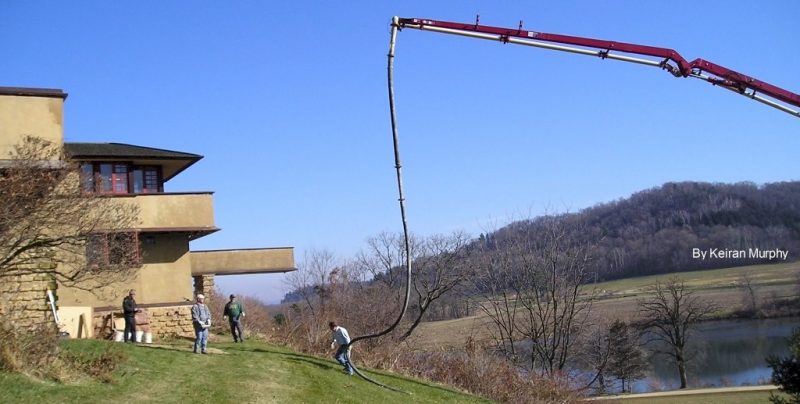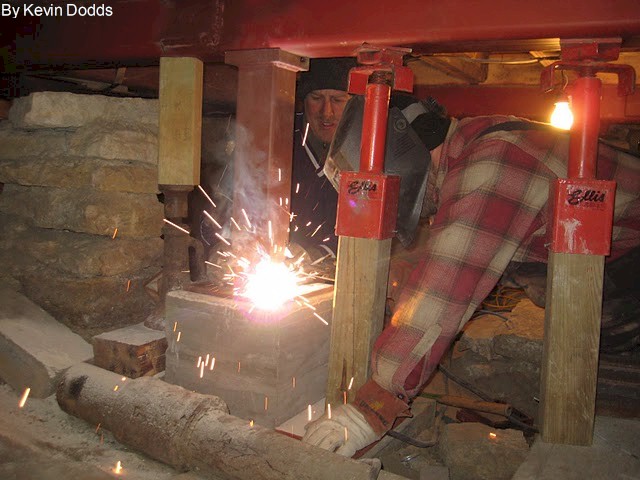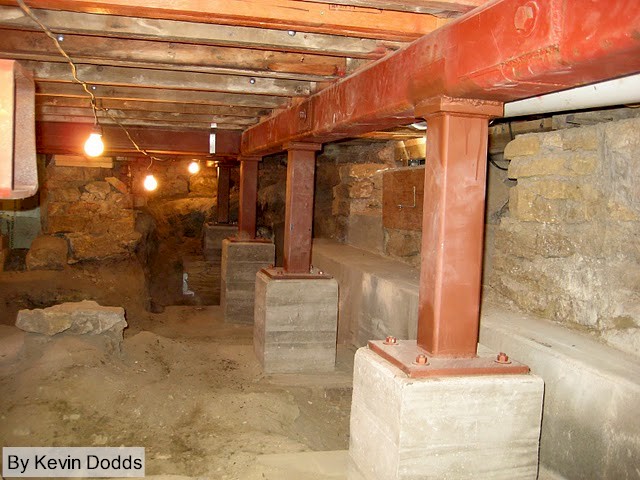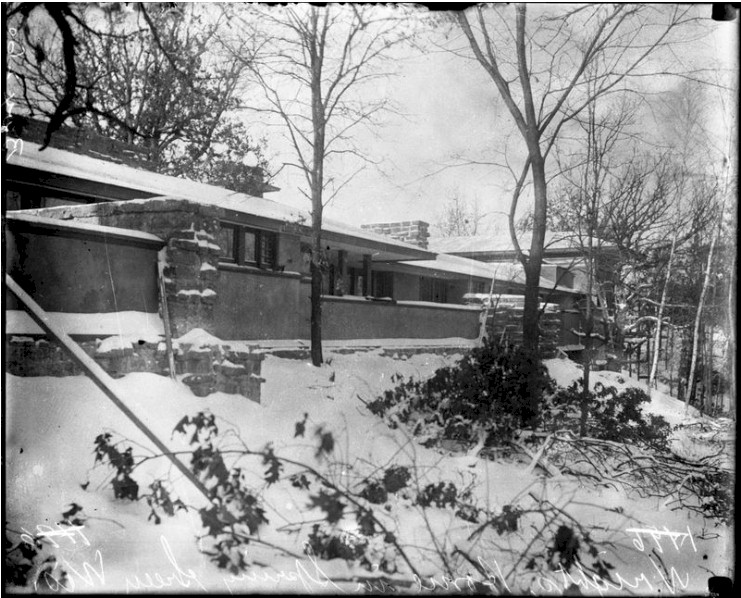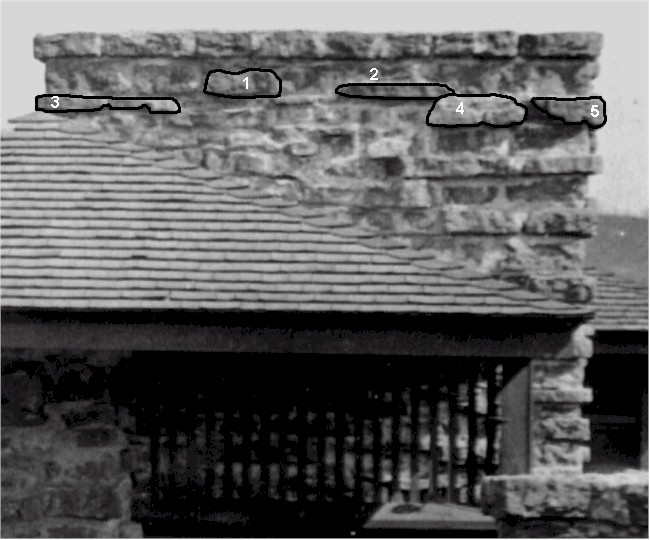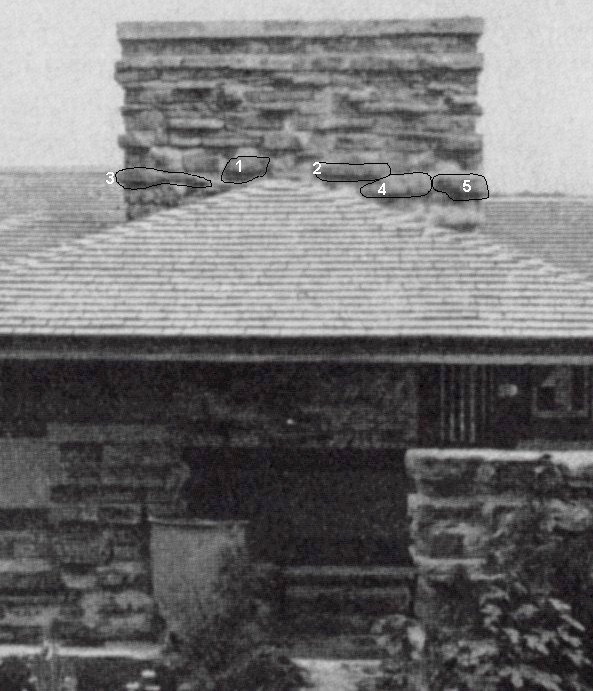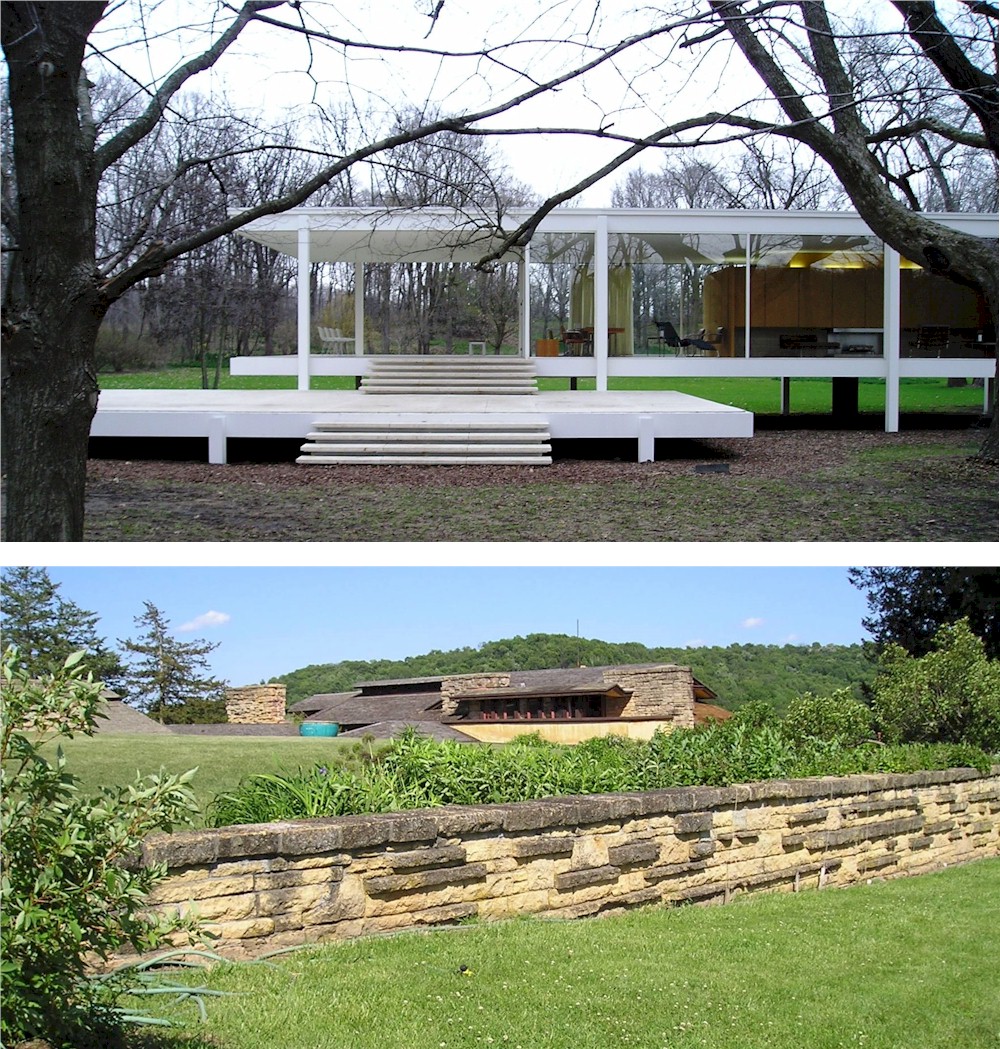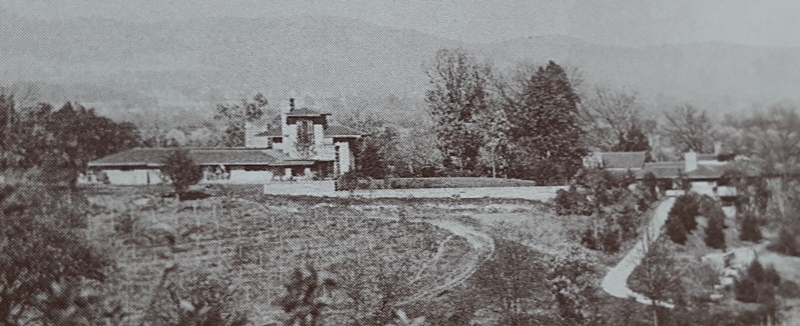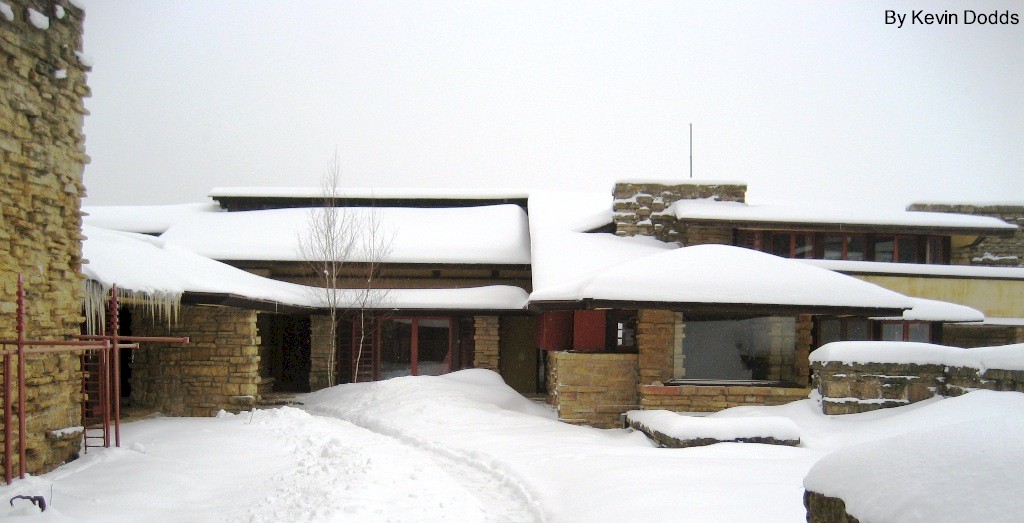Frank Lloyd Wright standing with daughters Svetlana and Iovanna, while his wife, Olgivanna, looks at the photographer. Wright’s sister, Maginel, sits behind them with the dog. Judging from Iovanna’s age, I think this was taken in the summer of 1930-32. The group is seated at Taliesin’s Tea Circle steps. I can’t find an early photo of just the Wrights, so I thought I’d put one in here with mostly their nuclear family.
Being in the Wright world means that you know a smorgasbord of things, along with certain dates:
- April 9
- the day Wright died
- April 10
- the day he bought the land where Taliesin is
- April 20
- the day of the second fire at Taliesin (newly in his relationship with Olgivanna)
- April 26
- the day of the Hillside fire
- June 8
- Wright’s birthday
- August 15
- the day of the first fire at Taliesin
and
August 25.
This was the day in 1928 that Frank Lloyd Wright and Olgivanna Lazovich Milanoff got married (here’s the link to the wedding announcement).
So, today
I’m going to include quotes from Olgivanna or Frank Lloyd Wright about their wedding, or each other.
Here is Olgivanna’s writing in The Life of Olgivanna Lloyd Wright: From Crna Cora to Taliesin; from Black Mountain to Shining Brow.
This was the book compiled and edited by Maxine Fawcett-Yeske, Ph.D. and Bruce Brooks Pfeiffer, D.H.L
Wedding
At last we awoke on the sunny morning of the long-awaited day of our wedding…. The ceremony was held on the lovely patio under a blue sunny sky. Frank was dressed in white… and I had a purple afternoon gown sprinkled with a gold pattern and a wreath of lavender flowers around my head. When the minister asked the question, “in sickness and in health?”
Frank answered very quietly, “Yes, I have and I will.”
…. then a memorable telegram came from Darwin D. Martin, “Taliesin open for your return.” The joy that went through us lifted us up…. It was Taliesin we saw, the hills, the meadows, the cows chewing benignly in the sun. We embraced each other; the children bounced around us. A cycle of our life was closing, and we were about to enter another… – re-establishing our life at Taliesin, after years of wandering.
The Life of Olgivanna Lloyd Wright (ORO Editions, 2017), 101, 102.
And here’s
some of the nice things that Wright wrote about Olgivanna in the 1943 edition of his autobiography.
The version of the 1943 autobiography that you can get via Amazon is through a small bookseller because I think it hasn’t been printed in awhile. But if you want to see it RIGHT NOW, you can read it online at Archive.org, the Internet Archive.
Wright and Olgivanna met in late November 1924 by chance at a ballet matinee,1 and spoke during and afterward:
… I must have met her—somewhere? But no, no one like her—that I could remember–…. She spoke in a low musical voice…. [p. 510] No longer quite so strange, the emissary of Fate, mercy on my soul, from the other side of the known world, bowed her head to my invitation to tea at the nearby Congress. She accepted with perfect ease without artificial hesitation.
I was in love with her.
It was all as simple as that….
Frank Lloyd Wright, An Autobiography, new and revised ed. (New York: Duell, Sloan, and Pearce, 1943), 509.
And he writes heart-catchingly
a few pages later:
Just to be with her uplifts my heart and strengthens my spirit when the going gets hard or when the going is good.
…. I found that the girl who was qualified by years of hard, patient trying to understand, inspired by ideas similar to my own, was qualified to be an imaginative vivid inspiration and a real mate.
Whatever she undertook, she never shirked.
And strangely enough—or is it so strange—she, whose parents were Montenegrin dignitaries, had pictures of her Montenegrin forebears that looked just like my Welsh forebears….
She is brave and has the heart of a lioness.
No, I think we mated as planned behind the stars—just right. I don’t even wish I were younger because we both seem to add up to just about the right age for us, and I admire maturity much more than youth.
Frank Lloyd Wright, 512, 513.
Posted August 24, 2024.
The photo at the top of this page was on the cover of the book, Frank Lloyd Wright Remembered, ed. Patrick J. Meehan. The photo is from the Frank Lloyd Wright Trust.
Notes:
1. Yes, I know that if you get “the Fellowship book” (The Fellowship: The Untold Story of Frank Lloyd Wright and the Taliesin Fellowship, by Friedland & Zellman), you read how Olgivanna met Wright as part of a plan by Gurdjieffians (followers of George Gurdjieff) in the U.S. But while
YES
the book has over a hundred pages of Endnotes, I concluded after my first read that you’ve got to read every note to check on what they’re writing.
Because,
while they’re almost obsessed with proving that Olgivanna was pushed in front of Wright so fans of Gurdjieff in the U.S. could recreate his philosophical community, the easy conclusions they come up with in the text don’t always match the Endnotes. Did Olgivanna meet Wright at the ballet in 1924 because Jerome Blum (a friend who Wright wrote about in his autobiography) arranged for the meeting? Well, Endnote 95 on page 618 (of the 1st edition of The Fellowship book) says, “There is no evidence of any relationship among Olgivanna, Jerome Blum, and Waldo Frank, other than through Gurdjieff connections.” And that’s just one of the places where the book’s text is different from an Endnote.


